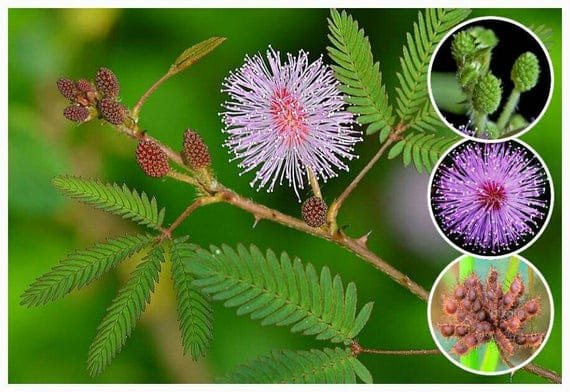Table of Contents
Sharmili Plant Unveiled: Mimosa Pudica, Touch Me Not Plant, and More
The Marvelous and Multifaceted Sharmili Plant
Imagine a plant that recoils at the slightest touch, seemingly shy and sensitive, yet boasting a wide range of uses and benefits. Enter the Sharmili Plant, Mimosa Pudica, Touch Me Not Plant, Sharmili Paudha, Chui Mui Plant, Shameplant, and Sensitive Plant – all names for this intriguing flora. Let’s embark on a journey to uncover the mysteries of this unique plant, shedding light on its characteristics, applications, and fascinating quirks.
I. Meet the Sharmili Plant: A Quick Overview
A. Mimosa Pudica: The Scientific Name
B. Touch Me Not Plant: A Fitting Moniker
C. Sharmili Paudha, Chui Mui Plant, Shameplant, and Sensitive Plant: a Rich Tapestry of Names
II. The Unique Characteristics of the Sharmili Plant
A. Beware the Touch: The Plant’s Sensitivity
- The Science Behind the Shy Movements
- From Sunup to Sundown: A Day in the Life of the Sharmili Plant
B. The Hidden Gems: Benefits and Uses
- Medicinal Marvels: Healing Properties of the Sharmili Plant
- The Green Thumb’s Delight: A Great Addition to Your Garden
III. Frequently Asked Questions
- Why does the Sharmili Plant, Mimosa Pudica, Touch Me Not Plant, and its other names, react to touch?
- How can I grow my own Sharmili Plant, and what kind of care does it need?
- Are there any precautions to take when using the Sharmili Plant for medicinal purposes?
IV. Conclusion: Embrace the Sharmili Plant and Its Many Names
Meet the Sharmili Plant: A Quick Overview
Mimosa Pudica, the scientific name for the Sharmili Plant, is a perennial herb that is native to Central and South America. Known for its remarkable ability to react to touch, this bashful beauty has been dubbed the Touch Me Not Plant. Its other names – Sharmili Paudha, Chui Mui Plant, Shameplant, and Sensitive Plant – further highlight its unique characteristics.
The Unique Characteristics of the Sharmili Plant
Beware the Touch: The Plant’s Sensitivity
The Sharmili Plant’s claim to fame is its sensitivity to touch. When poked or stroked, its leaves rapidly fold inward, giving the impression of a shy or embarrassed response. But what’s the science behind this fascinating phenomenon?

The Science Behind the Shy Movements
This movement is due to a process called thigmonasty. When the plant’s leaves are touched, the cells release ions, causing water to move out and the leaves to fold. This response is thought to be a defense mechanism against predators.
From Sunup to Sundown: A Day in the Life of the Sharmili Plant
If you think the Sharmili Plant’s behavior is fascinating during the day, wait until you see it at night. The plant’s leaves fold up on their own as darkness falls, only to reopen as the sun rises the next morning.
The Hidden Gems: Benefits and Uses
Medicinal Marvels: Healing Properties of the Sharmili Plant
The Sharmili Plant boasts a variety of medicinal properties, including anti-inflammatory, anti-diabetic, and anti-anxiety effects. Traditional medicine has used the plant to treat ailments such as wounds, ulcers, and digestive disorders. Its root extracts have also shown promise in combating harmful bacteria and parasites.
The Green Thumb’s Delight: A Great Addition to Your Garden
Aside from its medicinal uses, the Sharmili Plant is a delightful addition to any garden. Its captivating reactions to touch make it a conversation starter and a source of entertainment for kids and adults alike. This hardy plant can adapt to various soil types, making it relatively easy to care for and a great choice for novice gardeners.









